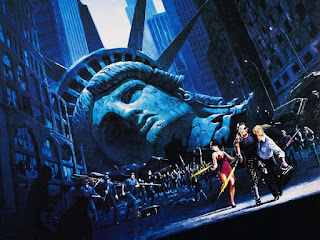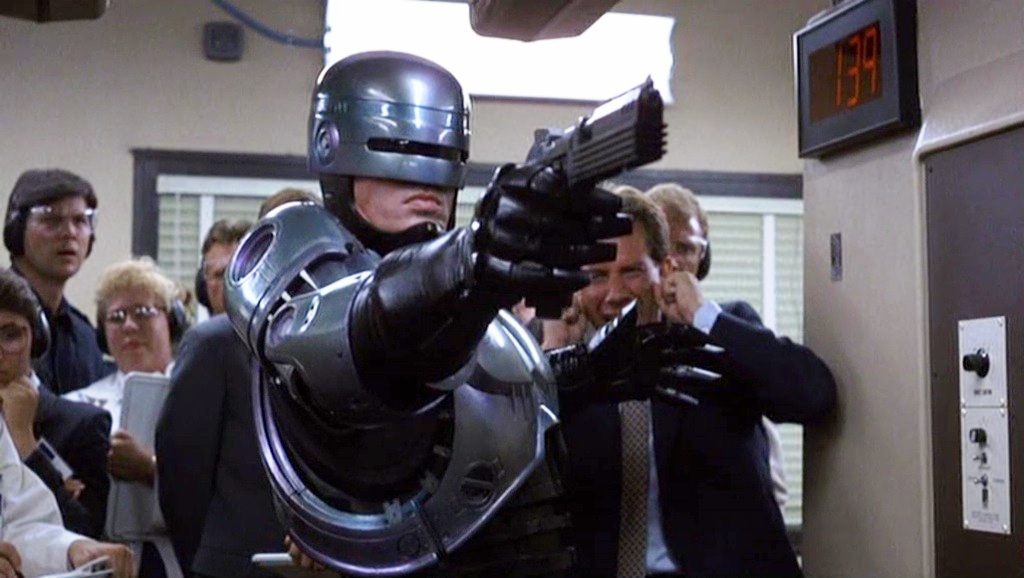Yesterday(As of this writing) was what could have been Artist Rich Buckler's 73rd birthday, had he not succumbed to Cancer on May 19th, 2017. While Rich gained prominent accolades for his pencil work in Marvel Comics' Fantastic Four and Black Panther, it was his sole creation, Deathlok, that Buckler was most associated with. Appearing in Marvel's Astonishing Tales #25 in August 1974, Deathlok aka the "Demolisher" is about the adventures of a Man who has been "Frankensteined” by his superiors and utilized as an assassin, taking out corporate rivals, while grasping onto what's left of his humanity. Sounds simple? No, not quite.
Despite having inspiration to some degree from ABC's The Six Million Dollar Man TV series at the time, Deathlok‘s premise was original enough to stand on his own merits, with a more exciting concept than the classic television series. Whereas Steve Austin was a government operative in modern times, Deathlok's worldbuilding involved bizarre sci fi narrative apparatus such as cloning, genetic engineering, gene splicing, virtual reality and cryogenics, which these topics were featured in today’s world of information (Newspapers, Internets, etc.) this obscure comic with its titular Antihero, had foreseen these scientific trends well over 45 years ago! But it doesn't end with that.
It’s the lasting influence from Deathlok, that has made a lasting impact within the annuls of Popular Culture as we know it! Let's look at a few examples, shall we?
Movies:
Although some would cite Soylent Green as an important backdrop shown in Deathlok's dystopian New York, which would be a justified argument, but that's where the aesthetic similarities would stop there, as Buckler's 1974-1976 run more than likely caught the eye of then future Directors, Writers and so forth of the motion picture industry. And from what was presented from the Comics-to- silver screen is obvious. 1981's John Carpenter’s Escape From New York, borrows Deathlok’s post apocalyptic Manhattan as a violent, anarchic hell filled with maniacs, cannibals and gangs. Carpenter along with Nick Castle wrote Escape in 1974 as a response to both the Watergate scandal and the resultant distrust in government, which was around the time, Astonishing Tales #25 debuted. Deathlok codified the dissident antihero long before Plissken for those who weren’t aware of this character outside of the soft reboot during the mid-eighties.


“Deathlok was the first of his kind in terms of concept and appearance. All the other cyborg super-soldier characters that have come after him seem to be patterned after [him],” said Buckler. “[Robocop is an] extremely close imitation… And a whole lot of comics fan out there agree with me. ‘Terminator’ owes a lot to my original concept. So does ‘Universal Soldier’ and a bunch of other ‘descendants.’”
Source: Detroit Metro Times.
Universal Soldier is another idea borrowed from the comic, as with Deathlok, the Unisol program consists of reanimated dead soldiers, carrying out dangerous operations for a privatized military corporation.
However, the Robocop films are more inspired examples, judging by the comparisons; Luther Manning was a family man, and a soldier, who gets killed and resurrected as the Cyborg, Deathlok by a sinister corporation. Robocop? Same thing. Alex Murphy; a family man, and Police officer is gunned down and resurrected as a Cyborg by a..you guessed it; a sinister corporation.
Both Deathlok and Robocop were preprogrammed by these evil organizations yet overcome the companies’ brainwashing and attempts to destroy them. Eventually, recaptured their true identities, keep their evil programmers from wiping lost, yet recovered memories and personalities. Notice how both Alex and Luther attempt to reunite with their "Widows".
Other notable examples was a virtual battle between Deathlok and his superior, Simon Harlan Ryker within a computer network called the God Machine! Keep in mind, that this concept was written, illustrated and published more than two decades before both The Matrix, and The Lawnmower Man debuted, long before the concepts of cyberspace and virtual reality became popular. Cyberspace, you say? Before The Matrix, Assassin's Creed, Lawnmower Man, and Inception there was “The God Machine”.
Once again, there’s that scene right out of the original DEATHLOK comics (Circa 1970s) where he goes back to see his wife but now, he's been turned into a machine, so it's a big, tragic scene. Co-Writer Doug Moench notes “I have also heard that the people who wrote ROBOCOP are comic book fans, so it seems pretty likely." "I didn't realize Deathlok was so unique; I think it was ahead of its time. It's only in retrospect that people remember it and are really obsessed with it. When we were doing him, there were no movies like that. Now it seems like all the big movies are like the comics we were doing in the early'70s. They're 20 years behind!"
Television
In television the banter between Manning and his onboard "Puter" influenced NBC's hit Television series Knight Rider, where you have the protagonist Michael Knight having arguments with his computerized car K.I.T.T.
The Look, and everything else
I have noticed overtime, how other artists used "parts" of Deathlok's design when developing their own character's aesthetics. For example, X-men's Cable not only comes equipped with an alloy coated bionic arm but bears the signature eye scar similar to Marvel's Grandaddy of cyborgs. Also, the Winter Soldier has a bionic arm like Cable and the 80's version of Deathlok conceived by Dwayne McDuffie, Gregory Wright and designed by Jackson Guice.
They often say that copying one's idea, is a way of paying homage, although I am inclined to disagree with that statement, in the case of DC's Cyborg, therein lies the exception. Artist George Perez based Cyborg and his tragic hero lore, from Buckler's character as a homage, as it was Rich who hired Perez. 😉 Ironically, Cyborg is more known thanks to consistency, meaning that he frequently appeared in the Teen Titans comics, animated series, the Injustice videogames, and a live action appearance in Doom Patrol and both versions of Justice League!
While Deathlok for the most part, had been sitting on the bench, aside from minor underwhelming appearances on Disney’s Agents of SHIELD and Agents of SMASH respectively, its Buckler’s legacy and contributions, that is, eternal.
Deathlok Lives!













